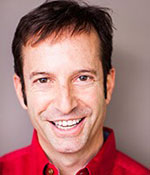The two-kilometre Comox-Helmcken Greenway in downtown Vancouver cost more than $5 million and took two years to complete, but the time and expense were worth it, according to a UBC study that examined local residents’ behaviour and health before and after completion.

Larry Frank
Larry Frank, a professor with UBC’s school of population and public health and school of community and regional planning, led the study and will present his research at this week’s Pro Walk Pro Bike Pro Place Conference in Vancouver. Here, he discusses his findings and offers insights into how cities can create more livable neighbourhoods.
How did the Comox-Helmcken Greenway impact residents living nearby?
We had a large sample of 524 residents who lived within 500 metres of the greenway, and looked at how their behaviour changed before and after it was built. We found significant increases in active transportation—cycling and walking—and a significant decline in driving.
The number of daily bike trips went up by 32 per cent, and the number of daily automobile trips went down by 23 per cent. Study participants living along the corridor greenway spent about a third less time in cars after the greenway was constructed and reported a 16 per cent increase in the number of days engaged in moderate physical activity. Residents reported a 10 per cent decrease in the number of days in poor physical or mental health, and an eight per cent decline in time spent sedentary.
So people felt better, were more active, and produced less greenhouse gas emissions. As we continue to examine our results, we expect to show that the relatively modest investment in the greenway will yield a significant payback in health-care cost reductions.
Any thoughts on the Arbutus corridor?
I think the results of our study justify the investment in the Arbutus Greenway.
Compared to the Comox-Helmcken Greenway, there’s a greater variation in density and the distances are greater between destinations. There could be a greater emphasis on cycling versus pedestrian movement.
Links to transit will also be provided along the corridor in the future, and connections will be more direct and overall travel times lower. People will walk if transit is readily provided to connect them at a more regional scale. By linking pedestrians and cyclists with transit, you effectively create a competitive alternative to driving.
What makes for a good greenway?
It needs to accommodate movement for pedestrians, cyclists, and scooters, while also providing seating, lighting and vegetation that is well integrated into the surrounding community. You need a balance of different elements and amenities to make it comfortable, including places to rest along the way. It should ideally be located where a variety of age groups nearby can use it to get to and from work and other destinations. You also want to make sure there’s good visibility on the street, and a sense of safety and security. The Comox-Helmcken Greenway has these elements.
Having a strong sense of place is important as well. Good design will incorporate repeating elements along the greenway so that people know where they are as they travel. A lot of engineering went into the Comox-Helmcken Greenway to have very careful turning movements, and a separation of vehicles from pedestrians and non-motorized travellers. Many blocks of the greenway do allow cars, but only for very short distances. So if you’re local, you can get around and keep circulation moving, but if you’re going any distance in a car you’re not going to want to take that route.
What North American cities are encouraging active transportation particularly well?
Many regions are investing in active transportation now and these early projects like the Comox greenway show how beneficial they are. Los Angeles is aggressively investing in infrastructure to support active transportation. Portland’s also doing some greenway work and Seattle recently passed a bond issue to fund a lot of investments similar to the Comox-Helmcken Greenway in the urban core. Vancouver is a leader and the transformation taking place to making our city bikable will have lasting benefits for generations to come. They’ll make our region even more attractive to visitors and future residents.